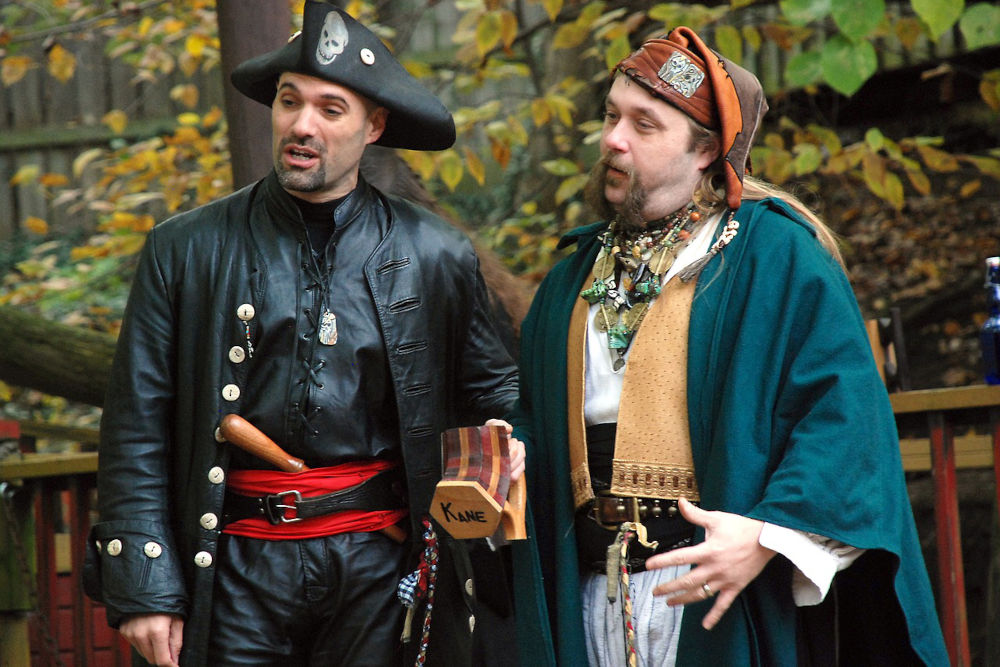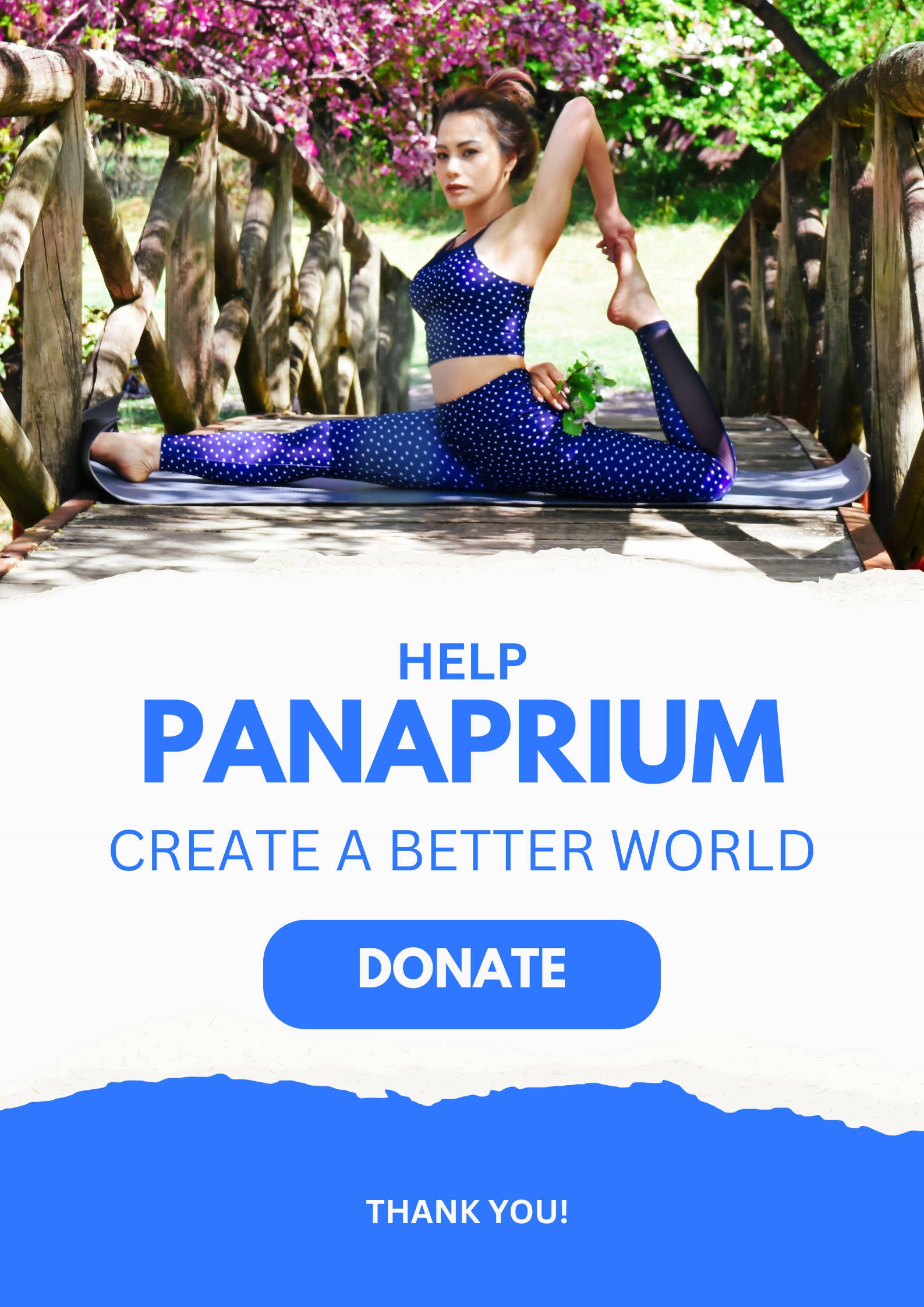
Piraten gibt es schon seit Jahrhunderten. Sie raubten große Mengen Getreide und Olivenöl von römischen Schiffen und gefährdeten die Handelsrouten des antiken Griechenlands. Ihre Charaktere inspirierten im Laufe der Jahre Filme, Bücher und Legenden.
Wenn wir an einen Piraten denken, kommt uns normalerweise das Bild einer schroffen, wettergegerbten Gestalt mit bedrohlicher Erscheinung in den Sinn. Er trägt möglicherweise einen zerschlissenen Dreispitz und einen buschigen Bart, möglicherweise mit einer Narbe im Gesicht. Eine Augenklappe bedeckt ein Auge und ein goldener Ohrring baumelt an seinem Ohr. Seine Kleidung ist eine Mischung aus ausgefransten, abgenutzten Kleidungsstücken, darunter ein langer Mantel, der oft mit einem Gürtel geschmückt ist, an dem ein Messer oder eine Steinschlosspistole befestigt ist. Der Ausdruck des Piraten ist normalerweise trotzig und abenteuerlustig und verkörpert ein Leben in Gesetzlosigkeit auf hoher See.
Haben sich Piraten also früher tatsächlich so gekleidet und verhalten? Finden wir es heraus!
Panaprium ist unabhängig und wird vom Leser unterstützt. Wenn Sie über unseren Link etwas kaufen, erhalten wir möglicherweise eine Provision. Wenn Sie können, unterstützen Sie uns bitte monatlich. Die Einrichtung dauert weniger als eine Minute und Sie werden jeden Monat einen großen Beitrag leisten. Danke schön!
Warum mögen wir dunkle Charaktere?

Trotz der illegalen Natur und Aktivitäten von Piraten sind Menschen laut Steve Rose grundsätzlich darauf ausgerichtet, nach Sinn zu streben, selbst angesichts von Widrigkeiten.
Dunkle Charaktere sind selten eindimensional; vielmehr haben sie häufig einen verzerrten moralischen Kompass, der als Rechtfertigung für ihr Verhalten dient. Krause (2023) veröffentlichte einen Artikel in der Zeitschrift Psychological Science, in dem er erklärt, wie moralische Mehrdeutigkeit einen psychologischen Raum schafft, in dem der Bösewicht seine Taten rationalisiert und glaubt, dass seine böswilligen Taten einem höheren Zweck dienen.
Daher sind Piraten ein wahres Beispiel für Romanisierung und Heldentum.
Was trugen Piraten früher?

Es gibt keine Hinweise darauf, dass Piraten jemals Kleidung getragen haben, die sich wesentlich von der Kleidung ihrer Zeit unterschied. Aus der World History Encyclopedia erfahren wir, dass ihre Kleidung an Bord praktisch und bequem war, an Land jedoch meist extravaganter.
Die meisten Vorstellungen über ihre Kleidung basieren auf Romanen wie „Die Schatzinsel“ von Robert Louis Stevenson aus dem Jahr 1883.
Es stimmt allerdings, dass Piraten besonders während des Goldenen Zeitalters der Piraterie (1690–1730) gern auffällige und markante Kleidung und Accessoires trugen.
Kapitäne kleiden sich, um zu beeindrucken

Ein langer Mantel, der an Land gekauft oder von einem reichen Gefangenen erbeutet wurde, war eine weit verbreitete Kleidung für Piratenkommandanten. Er hatte große, hinten zugeknöpfte Manschetten und eine erstaunliche Anzahl von Knöpfen vorne.
Kapitäne trugen einen Dreispitz, möglicherweise mit Federn oder einem goldenen Akzent, um ihren Rang anzuzeigen.
Schmuck, wie etwa goldene Ringe oder ein großer, dekorativer Ohrring, und ein Fernglas oder ein Kompass können das Outfit vervollständigen. Gelegentlich kann auch ein Umhang oder Cape für zusätzliches Flair sorgen.
Hemden waren unverzichtbar

Piraten trugen normalerweise einfache, praktische Hemden, die für das harte Leben auf See geeignet waren. Diese Hemden wurden aus preiswerten Materialien wie Baumwolle oder Leinen hergestellt. Die Hemden waren locker geschnitten und hatten lange, bauschige oder hochgekrempelte Ärmel, was ihnen bei körperlichen Aufgaben Bewegungsfreiheit ließ.
Die Hemden hatten oft einen offenen, kragenlosen Halsausschnitt, der manchmal mit einem Kordelzug oder einer Krawatte geschnürt war, aber häufiger offen gelassen wurde, um in der heißen, feuchten Umgebung des Meeres für eine bessere Belüftung zu sorgen.
Schauen Sie sich unsere Auswahl an ethischen Bekleidungsmarken an, die günstige und umweltfreundliche Hemden aus Bio-Baumwolle für Männer und Frauen anbieten.
Schmuck

Piraten liebten Schmuck, weil er ihren erbeuteten Reichtum widerspiegelte und den Wunsch, ihren rebellischen Lebensstil zur Schau zu stellen. Sie trugen mehrere Halsketten , Anhänger oder Amulette und insgesamt zahlreiche Armbänder und kombinierten so Funktionalität mit einer kühnen Zurschaustellung von Trotz und Reichtum.
Creolen aus Gold oder Silber waren bei Piraten ein Grundbestandteil der Garderobe.

Piraten trugen oft goldene oder silberne Ringe, die oft mit Edelsteinen besetzt waren. Ringe waren eine tragbare Form von Reichtum, der leicht gehandelt oder verpfändet werden konnte und von gekaperten Schiffen geplündert wurde.
Finden Sie hier die 10 besten Marken für ethischen Schmuck , die recycelte Materialien verwenden.
Welche Farben hat der Piratenpreis

Piraten bevorzugten praktische Kleidungsfarben für das Leben auf See und symbolisierten ihre rebellische und mutige Natur.
Schwarz war beispielsweise eine beliebte Farbe, um Tod, Gefahr und den furchterregenden Ruf zu symbolisieren, den Piraten vermitteln wollten, während Rot für Aggression und Trotz stand.
Gold ist eine weitere beliebte Farbe, die mit Reichtum und Plünderung in Verbindung gebracht wird, und Lila, Marineblau und Smaragdgrün wurden für Jacken und Mäntel verwendet, um extravagante Looks zu kreieren.
Hose

Piraten bevorzugten locker sitzende Hosen und Schlaghosen, da sie diese zum Reinigen des Decks, zum Erklimmen der Takelage oder zum Waten an Land leicht hochkrempeln konnten.
Piratenhosen waren normalerweise in praktischen, gedeckten Farben gehalten, die für die rauen Bedingungen auf See geeignet waren. Zu den Farben gehörten Braun, Hellbraun und Grau, die leicht zu pflegen waren und Schmutz und Abnutzung wirksam verbargen.
Entdecken Sie hier die 10 nachhaltigsten Schlaghosen und ausgestellten Leggings .
Hüte und Perücken

Entgegen fast aller Darstellungen waren Dreispitzhüte nicht so verbreitet, wie wir sie in Filmen und Romanen gesehen haben. Piratenkapitäne trugen Dreispitzhüte an Land. Aufgrund der starken Winde auf dem Meer waren sie zum Segeln ungeeignet.
Piraten trugen Hüte, aber diese waren normalerweise nur bei kaltem Wetter zu tragen. Es handelte sich um eng sitzende Mützen aus warmen Stoffen, die bei starkem Wind nicht weggeweht wurden. Hier finden Sie erschwingliche und nachhaltige Hüte und Beanies .
Zweifellos war die Perücke ein stilvolles Accessoire. Angesichts des Rufs der Piratenkapitäne, elegant und luxuriös zu sein, trugen sie meist längere schwarze oder weiße Perücken und schmückten die Enden mit bunten Bändern.
Crew-Jacken und Oberbekleidung

Piraten trugen kurze, warme Jacken, die sie vor Kälte, Wind und Feuchtigkeit schützten. Sie passten gut und hatten keine Schwänze, die ihre Beweglichkeit einschränken oder sich in Seilen verheddern könnten.
Diese Jacken wurden aus einem dicken, grauen oder blauen Stoff hergestellt, der den alltäglichen Aufgaben der Seeleute sehr widerstandsfähig gegenüberstand.
Entdecken Sie unsere Kollektion stylischer und recycelter Jacken hier.
Hose

Knielange Hosen waren normalerweise eng anliegend und knapp unterhalb des Knies mit Knöpfen oder Bändern befestigt. Seeleute und Piraten trugen diese Hosen oft wegen ihres Komforts, ihrer Zweckmäßigkeit und ihrer Strapazierfähigkeit für die anstrengende Arbeit auf einem Schiff. Kniehosen passten perfekt zu langen Strümpfen und robusten Schuhen oder Stiefeln.
Die moderne Alternative zu Kniehosen sind Caprihosen oder knielange Leggings . Diese Kleidungsstücke ähneln denen von Kniehosen, da sie kürzer als lange Hosen sind, normalerweise knapp unter dem Knie enden und eine bequeme Passform bieten, die Flexibilität und Bewegungsfreiheit ermöglicht.
Strümpfe

In den kalten Monaten trugen Piraten lange oder knielange Strümpfe unter Kniehosen oder Hosen. Die Strümpfe waren normalerweise in neutralen Farben wie Schwarz, Grau oder Braun gehalten, aber auch gestreifte Strümpfe waren weit verbreitet.
Hier ist unsere Auswahl der besten erschwinglichen und biologischen Sockenmarken , die verschiedene Sockenarten nachhaltig herstellen.
Trugen Piraten Leder?

Leder war aufgrund seines Rufs der Haltbarkeit und Schutzwirkung für bestimmte Kleidungsstücke und Ausrüstungsgegenstände ein geschätztes Material.
Piraten trugen beispielsweise Ledergürtel, an denen sie Waffen wie Entermesser, Pistolen und Dolche befestigten. Auch Stiefel und Schuhe waren aus Leder.
Leder ist bei Piraten heute viel häufiger anzutreffen. Heutige Piraten tragen gerne echte oder Kunstlederartikel, Mäntel, Hosen und Handschuhe aufgrund ihres sorglosen und robusten Aussehens.
Bandanas und Schals

Piraten trugen oft Bandanas um den Kopf, um sich vor Sonne, Schweiß und Gischt zu schützen.
Außerdem trugen Piraten Schals oder Bandanas um den Hals, um sich vor Sonne, Wind oder Kälte zu schützen. Ein locker um den Hals gewickelter Schal war nicht nur ein modisches Statement, sondern diente auch als vorübergehender Verband oder Maske.
Obwohl echte Piraten heute selten sind, werden Bandanas und Schals in der Populärkultur immer noch mit dem Piratenbild in Verbindung gebracht. Hier finden Sie unsere Auswahl der günstigsten, umweltfreundlichsten und süßesten Bandanas und Stirnbänder .
Fußbekleidung

Ein Piratenkapitän ohne seine Stulpenstiefel ist undenkbar. Stiefel waren ein Zeichen der Oberschicht, die sie oft in Innenräumen trug, mit oder ohne Sporen. Die Stiefel waren kniehoch, sehr ähnlich den Reitstiefeln, die wir heute kennen, und Kapitäne trugen sie an Land zusammen mit langen Mänteln.
Schauen Sie sich unsere Auswahl der günstigsten, nachhaltigsten und veganen Kniestiefel an, die unter den höchsten sozialen und ökologischen Standards hergestellt werden.
An Bord von Schiffen sind sie allerdings nicht das praktischste Schuhwerk. Die Besatzung zieht es vor, feste Lederschuhe zu tragen, um die Füße zu schützen und auf nassem Deck Halt zu haben.
Westen

Piraten trugen Westen, insbesondere diejenigen mit höherer Autorität oder solche in angesehener Position, wie etwa Piratenkapitäne oder -offiziere.
Die Weste war ein ärmelloses Kleidungsstück, das über einem Hemd und unter einem Mantel oder einer Jacke getragen wurde und im 17. und 18. Jahrhundert ein fester Bestandteil der Herrenmode war, auch bei Piraten.
Das moderne Äquivalent der Weste ist die Weste. Wenn Sie also einen echten Piratenstil nachbilden möchten, vergessen Sie nicht, eine Weste in Ihr Ensemble aufzunehmen. Hier finden Sie günstige, umweltfreundliche und ethisch hergestellte Westen .
War dieser Artikel hilfreich für Sie? Bitte teilen Sie uns in den Kommentaren unten mit, was Ihnen gefallen oder nicht gefallen hat.
About the Author: Iana Jekova
Wogegen Wir Kämpfen
Weltweit-Konzerne produzieren in den ärmsten Ländern im Übermaß billige Produkte.
Fabriken mit Sweatshop-ähnlichen Bedingungen, die die Arbeiter unterbezahlt.
Medienkonglomerate, die unethische, nicht nachhaltige Produkte bewerben.
Schlechte Akteure fördern durch unbewusstes Verhalten den übermäßigen Konsum.
- - - -
Zum Glück haben wir unsere Unterstützer, darunter auch Sie.
Panaprium wird von Lesern wie Ihnen finanziert, die sich unserer Mission anschließen möchten, die Welt völlig umweltfreundlich zu gestalten.
Wenn Sie können, unterstützen Sie uns bitte monatlich. Die Einrichtung dauert weniger als eine Minute und Sie werden jeden Monat einen großen Beitrag leisten. Danke schön.































0 Kommentare